Jacob Richards
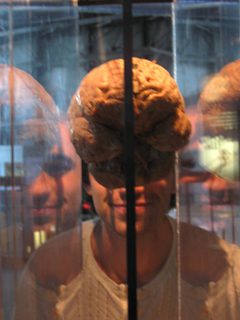
The brain is a system of cells that electrically interact with each other in complex ways. Using functional magnetic resonance imaging (fMRI) on a human at rest or doing a task, we can identify clusters of cells that work together to transmit electrical messages to other clusters of cells. These functional networks allow us to connect what is happening physiologically in the brain to mental phenomena. It is useful to find a baseline organization of functional networks in the brain to characterize what changes occur when a human begins a […]
Derek Shapiro
Not too many people can say they have ever heard of a caecilian, however, these worm-like, tailless amphibians, are an intriguing and understudied organism. For my project, I will be conducting an in depth, observational study of the lung development of one particular species, Dermophis mexicanus. This tropical species has two lungs, similar to other vertebrates, but one distinguishing characteristic is that these lungs are of unequal size. In Dermophis mexicanus, the left lung is significantly smaller than the right lung and the goal of my project is to detail […]
Robert Claus
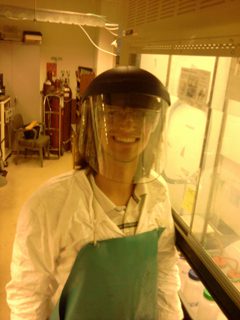
Over the last decade there has been increasing interest in how geckos can walk on vertical and even inverted surfaces. It has been found that they do so with tiny fibers on their feet which bend to adapt to and stick to surfaces. While the basic principles behind this have been studied and replicated on smooth surfaces with very simple fibers, geckos employ complicated fiber structures to adapt to more general surfaces. Due to the complicated nature of the real fibers, research on replicating them fully is progressing slowly. My […]
Yumi Suh
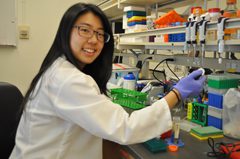
Bacterial communities have been shown to impact everything from geochemical cycles to human health and disease; however, the mechanisms by which natural microbial consortia partition resources and stably maintain cooperative loops of metabolite transfer are very poorly understood. These are incredibly powerful concepts; for example, synthetic communities could represent effective compartments for bioremediation or complex biochemical synthesis. Thus, we propose an exploratory study aimed at developing a genetic interaction map between pairs of model bacteria. Specifically, we will study Shewanella oneidensis MR-1, Zymomonas mobilis ZM4, Desulfovibrio alaskensis G20, and Escherichia […]
Andrew Hwang
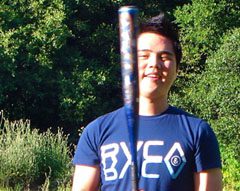
Nitric oxide (NO) is a toxic by-product of fossil fuel combustion known to cause lung infection and respiratory allergies. The catalytic reduction of NO by H2 over noble metal catalysts (e.g. platinum, rhodium, and palladium) is an effective means to remove this environmental toxin; however, the reaction mechanism is poorly understood. We aim to develop a set of elementary reaction steps describing the reaction pathway by measuring steady-state reaction rates. We plan to measure isotopic exchange rates and kinetic isotope effects and perform in situ infrared spectroscopy to evaluate the […]
Alyson Cook

The vertebrate skeleton has undergone extensive evolutionary adaption to a wide variety of environments. The precise molecular mechanisms that led to this vast variation are not fully understood. The three spine stickleback fish provides a model organism in which to study these mechanisms. Populations of stickleback colonized newly formed freshwater lakes and streams at the end of the last ice age and repeatedly evolved numerous skeletal adaptations, including lengthening of certain groups of bones. My project will investigate possible genetic and developmental mechanisms that led to this observed variation in […]
Henry Sweat

Currently, many structural engineers do not take masonry (or more technically infill walls) into account when they design a structure. In other words, they assume that the masonry that goes in between the structure has no effect on the building. The problem with this approach is during an earthquake, the bricks can affect the fundamental manner in which the structure reacts because, contrary to the design philosophy, they carry load and increase the stiffness of the building. My research is based on using a computer simulation called OpenSees to discover […]
Michael Appel
Caenorhabditis elegans is a widely studied bacterivorous nematode that is typically grown on one specific strain of E. coli as its standard food source for experiments. However, in nature the worm encounters almost endless varieties of bacterial food sources and establishes a much different microbiota than those grown in our sterile lab environments. Our lab is attempting to characterize this yet unknown normal mircobiota of C. elegans and to understand how different bacteria may provide benefits for the worm. So far our lab has identified two soil isolates that seem […]
S. Zayd Enam

Using the tools of machine learning one can determine parameters of a model that probabilistically best fit experimentally collected data. This gives us insight into determining the model that best describes the data. I will be using machine learning to fit models of receptive fields of auditory neurons (a receptive field is any stimulus that maximizes activation of a neuron) that have been generated using a sparse-coding model. In this case, a sparse-coding model is one that minimizes the number of neurons required to represent different sounds. Sparse-coding models have […]
Flora Ting
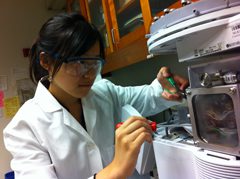
Determined Biochemical Benefits of Gene Therapy on the Peripheral Nervous System Smith-Lemli-Opitz Syndrome (SLOS) is a hereditary disorder characterized by physical dysmorphia, mental retardation, and delayed growth. The principal cause of the disorder is a defect in the gene that codes for the enzyme 7-dehydrocholesterol reductase (DHCR7), resulting in cholesterol deficiency as well as the toxic accumulation of its precursor, 7-dehydrocholesterol (7DHC). The gene for this missing enzyme will be delivered via a viral vector to treat mouse models genetically engineered to mimic SLOS in humans. Since cholesterol is critical […]